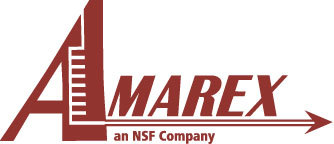- Home
- News and Resources
- Resources
- Designing — and Planning — for an Accelerated FDA Review
Designing — and Planning — for an Accelerated FDA Review
The typical drug development process, from discovery and development to U.S. Food and Drug Administration (FDA) approval, can take nearly a decade, even if everything progresses to plan, and vaccines often take longer, averaging 10-15 years.1 To the general public, this is difficult to imagine, especially after watching the COVID-19 vaccine reach FDA emergency use authorization in roughly one year, but sponsors and researchers alike are all too familiar with this timeline.
With every new drug product, researchers are essentially racing against time, striving to develop the safest, most effective product as quickly as possible to bring important therapies to patients with an unmet medical need. Although accelerated timelines, such as that of the COVID-19 vaccine, are very uncommon, that process was a good reminder that the FDA offers accelerated approval pathways that can help sponsors save time while still gathering all the data they need throughout the trial process. With four separate pathways and additional options for serious disease treatments, identifying the best pathway is essential, and proper trial design helps ensure that the best possible timeline is maintained throughout the process.
Current FDA Options for Accelerated Approval
The rapid development of the COVID-19 vaccine was possible thanks to several factors, including existing knowledge from previously identified coronaviruses, global cooperation for vaccine research and distribution, a combination of both government and private-sector funding, and new technology.2 This feat (while tremendous indeed), however, is not necessarily new. The mumps vaccine — now part of the MMR vaccine — took just four years to develop thanks in part to work that occurred during World War II.3 Both of these examples are clearly exceptions to the typical process, but they highlight what’s possible with the right foundation and focus.
Currently, the FDA offers four main options for accelerated approvals, each with slightly different criteria. A quick refresher is below:
- Fast Track – Facilitates development and expedites review of products that treat serious conditions and fill an unmet medical need.
- Breakthrough Therapy – Expedites development/review of products showing substantial improvement over available therapy (as per preliminary clinical evidence).
- Accelerated Approval – Allows drugs that treat serious conditions and fill an unmet medical need to be approved based on a surrogate endpoint.
- Priority Review – The FDA’s goal is to act on a drug application within six months (compared to 10 months for standard review).4
It is worth mentioning that you do not have to demonstrate the efficacy of your product to apply for these accelerated programs. If you have a safe drug, you will be eligible to apply. The most important thing is to know your drug as thoroughly as possible so you can select the best program for your needs.
There are also additional programs related to serious disease treatments that help support accelerated review and approval:
- Regenerative Medicine Advanced Therapy Designation (RMAT) – For regenerative medicine therapies that have shown the potential to address an unmet medical need (based on preliminary research) and are intended to treat, modify, reverse or cure serious or life-threatening conditions.
- Real-Time Oncology Review (RTOR) – Specific to oncology products, this program provides an efficient review process to ensure that safe and effective treatments are available to patients as early as possible.
- Expanded Access Program – Designed for those with an immediately life-threating condition or serious disease, this program allows patients to gain access to investigational medical products outside of the clinical trial for which the patient is enrolled.
Each of these programs/designations can be advantageous, but proper trial design must be considered to realize the full benefit. Of course, trials can be as unique as the treatments and conditions they are evaluating. Understanding the unique needs of the therapy is essential — meaning that an experienced research team can help you find not only success but also peace of mind with the process.
The Importance of Trial Design in Pursuing an Expedited FDA Program
Even the most expedited drug development pathway relies on the quality of the trial supporting the process. With proper trial design, meeting the requirements of these different designations can be seamless.
Ideally, the entire process begins by identifying potential accelerated pathways and requirements before designing a trial, rather than the reverse. Clinical trials designed to address the unique needs of these various programs and approval options will be better prepared to deliver the necessary results. However, the importance of proper design is magnified in these situations, as delays due to trial issues may negate the time saved by an accelerated process.
Depending on the drug product being developed, adaptive trials and other complex innovative trial designs (CIDs) can prove beneficial, as they are more agile than traditional clinical trials. These options allow sponsors and researchers to explore multiple pathways or make necessary adjustments within trial parameters. Partnering with an experienced research team helps eliminate many of the challenges that come with pursing one of the previously mentioned accelerated approval timelines.
Along with helping to design and run efficient, effective trials, researchers at Amarex understand the intricacies of working with the FDA. We have spent decades designing trials and preparing products for FDA review and approval. Amarex is also committed to remaining current on all FDA Guidances for Industry and other communications, allowing us to keep pace with developments, new opportunities and potential challenges. This experience enables us to help you design the most effective trial for your needs while also identifying options to potentially accelerate the process and help you bring important therapies to market as quickly and safely as possible.
References
- www.historyofvaccines.org/content/articles/vaccine-development-testing-and-regulation
- www.history.com/news/mumps-vaccine-world-war-ii
- www.fda.gov/patients/learn-about-drug-and-device-approvals/fast-track-breakthrough-therapy-accelerated-approval-priority-review
- www.fda.gov/vaccines-blood-biologics/cellular-gene-therapy-products/regenerative-medicine-advanced-therapy-designation
